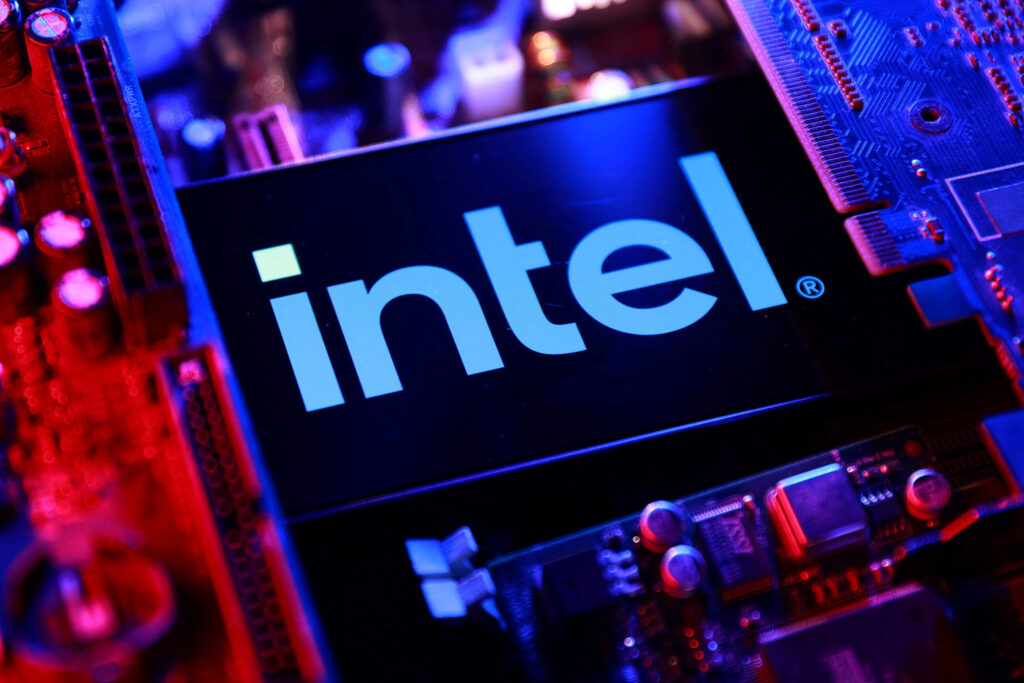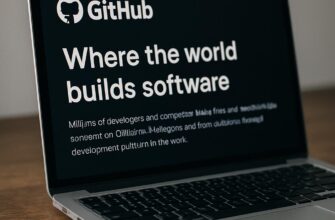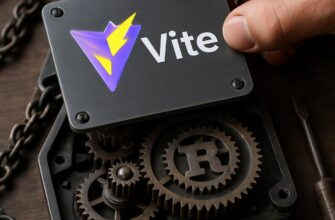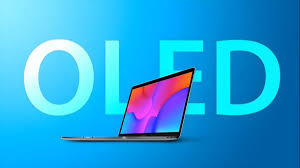Rumors and strategic whispers have circulated that Tesla is interested in manufacturing processors at Intel’s facilities. Whether that phrase describes a formal negotiation or industry speculation, it opens a window into two powerful trends: carmakers designing bespoke silicon, and established chipmakers trying to broaden their foundry business.
- How we arrived at this crossroads
- Tesla’s chip strategy: design, control, and the search for dependable supply
- What Intel brings to the table
- Advanced packaging as a differentiator
- Economic incentives and national policy considerations
- Practical challenges: process nodes, yields, and automotive qualification
- Supply chain and assembly: beyond the wafer
- Commercial models and contractual complexity
- Alternatives Tesla could pursue
- Potential benefits of an Intel–Tesla manufacturing tie-up
- Illustrative table: quick comparison of potential foundry partners
- Geopolitical angles and risk mitigation
- Workforce and ecosystem readiness
- Timeframe: how long would a real transition take?
- Real-world examples and lessons
- What engineers will care about
- Potential market reactions and competitor moves
- Scenarios: optimistic, pragmatic, and cautious
- How to read future signals
- Why this matters beyond Tesla and Intel
- What I’ve observed covering the industry
- Key questions to watch as developments unfold
- Final perspective: a strategic fit with caveats
How we arrived at this crossroads
The auto industry has shifted from mechanical engineering toward software-defined vehicles, and silicon sits squarely at the center of that transformation. Tesla, long an outlier for vertically integrating hardware and software, designs its own AI and control chips to run Autopilot and Full Self-Driving software.
At the same time, Intel has been reshaping itself, moving from a pure integrated device manufacturer to a hybrid that wants other companies to produce chips in its fabs. The company has invested heavily in process technology, advanced packaging, and capacity in the United States and Europe, positioning itself as a potential partner for nontraditional foundry customers.
Those parallel shifts—automakers becoming semiconductor designers and fabs seeking new customers—explain why any hint of collaboration between a top auto-tech company and a major fabricator draws attention. The proposition is not merely transactional; it represents a potential realignment of supply chains, national industrial policy, and competitive dynamics across two capital-intensive industries.
Tesla’s chip strategy: design, control, and the search for dependable supply
Tesla has invested heavily in in-house silicon design to optimize performance, efficiency, and cost for vehicle-specific tasks like sensor fusion, vision processing, and energy management. Controlling the architecture allows Tesla to tune chips tightly to its neural networks and software stack, reducing latency and power consumption in ways commodity processors cannot match.
Design is only one piece of the puzzle. Producing semiconductor devices reliably at scale requires access to modern fabs, packaging services, and supply lines for components like substrates and advanced memory. Historically, many fabless companies partner with TSMC, Samsung, or other foundries for manufacturing and rely on specialized OSATs for packaging and testing.
If Tesla seeks to move beyond its existing partners, it likely looks for capacity that offers automotive-grade reliability, geographic security, and advanced packaging—areas where Intel believes it can compete. Negotiations would therefore hinge on not only process nodes but also yield, automotive qualification, and long-term capacity commitments.

What Intel brings to the table
Intel brings decades of manufacturing expertise, a portfolio of process technologies, and a developing foundry arm that aims to attract major clients. The company has invested in advanced packaging technologies such as Foveros and EMIB, which enable heterogeneous integration—stacking logic with memory or other chiplets to optimize system performance.
Beyond pure process capability, Intel’s installed base of fabs in the United States and Europe is strategically valuable. Policymakers are pushing for onshore production of critical semiconductors, and Intel’s fabs could offer Tesla a US-based supply chain, reducing geopolitical risk associated with production concentrated in Asia.
Intel has also spent years courting customers through Intel Foundry Services (IFS), pitching the idea of co-design, custom packaging, and integration of multiple process nodes into a single package. For a vertically integrated company like Tesla, these capabilities could be especially compelling when building complex SoCs tuned for autonomous driving.
Advanced packaging as a differentiator
Packaging is increasingly the battleground where system performance is won. 2.5D and 3D packaging lets companies place compute die, memory, and specialized accelerators in close proximity, reducing latency and power use. Intel’s Foveros 3D stacking and EMIB interposers are concrete technologies that enable these designs.
For Tesla, advanced packaging could mean integrating high-bandwidth memory and multiple accelerators in a compact, thermally manageable package that fits into a vehicle’s constrained environment. That could boost neural network throughput without pushing power consumption beyond vehicle thermal budgets.
Economic incentives and national policy considerations
The CHIPS and Science Act in the United States, along with EU incentives, aim to rebuild semiconductor capacity domestically. Those programs make co-investment between automakers and domestic fabs attractive because subsidies can reduce capex burden and accelerate timelines. Working with an American fabricator could help Tesla qualify for such incentives.
Intel stands to gain too: landing a marquee customer in the automotive space would bolster its foundry credibility and help amortize costly fab investments. The prospects of guaranteed volume from a vertically integrated company like Tesla could influence Intel’s capital allocation and capacity planning.
Governments also view secure supply for automotive chips as a matter of industrial policy. A partnership that places critical automotive processors in national jurisdictions could be politically easier to support than relying on offshore foundries during geopolitically tense times.
Practical challenges: process nodes, yields, and automotive qualification
Manufacturing for automotive applications demands more than a fast process node. Automakers require extended temperature ranges, rigorous reliability testing, and ISO 26262 functional safety qualification. These are long, expensive processes that can add months or years to product launches.
Yield is another critical factor. Modern nodes can be notoriously finicky, and even small yield issues at ramp lead to large financial and supply chain headaches. Intel would need to demonstrate not only process maturity but also consistent yields at the volumes Tesla requires for the automotive market.
Additionally, transitioning a design from tape-out to high-volume production involves extensive co-engineering. It would necessitate new workflows and shared IP management between Tesla and Intel, as well as clear agreements on wafer ownership, yields, defect escapes, and warranty liabilities.
Supply chain and assembly: beyond the wafer
Once wafers are fabricated, the backend—or OSAT—ecosystem performs packaging, testing, and final assembly. Tesla would need to ensure that the full supply chain meets automotive-grade standards, which could require qualifying third-party partners or leveraging Intel’s own packaging lines where available.
This integration is important because packaging choices can dramatically affect thermal performance and long-term reliability inside vehicles. A breakdown between wafer fab and packaging partner coordination is a common source of failures in high-reliability applications.
Commercial models and contractual complexity
A commercial relationship between Tesla and Intel would likely involve multi-layered contracts: wafer supply agreements, IP licensing, NRE (non-recurring engineering) cost sharing, and penalties or incentives tied to yield and delivery metrics. Negotiating these terms can take months.
Questions about ownership of custom process recipes, access to yield learning, and rights to derivative designs would need explicit handling. The fabricator may want to protect process IP, while Tesla would want enough transparency to validate performance and troubleshoot defects.
Another commercial wrinkle is capacity reservation. Intel might demand long-term purchase commitments to justify dedicating wafer starts and tool time to a single customer, especially when the company is balancing its own product lines with foundry customers’ needs.

Alternatives Tesla could pursue
Tesla has options beyond Intel. TSMC is the global leader in foundry services and arguably the default for cutting-edge nodes, with proven automotive implementations. Samsung also offers advanced nodes and packaging, and other foundries are improving automotive capabilities.
Alternatively, Tesla could increasingly rely on established OSATs and system-level integrators while keeping some aspects of production close to home—for example, performing packaging and final testing in automotive supply hubs while outsourcing wafer production to Asia.
Finally, building Tesla-owned fabs is conceptually possible but capital intensive. The company would need to commit tens of billions to achieve competitive wafer production, a decision that changes Tesla from a vehicle manufacturer into a heavy industrial semiconductor player—something management might avoid unless absolutely necessary.
Potential benefits of an Intel–Tesla manufacturing tie-up
A partnership could yield faster time-to-market for Tesla’s next-generation chips if both companies align engineering timelines and share tooling. Co-locating part of the supply chain domestically would reduce lead times and potential customs delays for vehicles destined for U.S. and European markets.
Strategically, Tesla would gain an additional bargaining chip against other foundries, perhaps lowering costs or securing priority in periods of global constraint. Intel gains a marquee client, reinforcing its foundry ambitions and showcasing that it can support complex, high-reliability automotive designs.
There are also intangible advantages: joint R&D in packaging or process optimizations tailored for automotive workloads could spawn innovations benefitting the broader market, from power-efficient AI inference to novel thermal management schemes suited for vehicles.
Illustrative table: quick comparison of potential foundry partners
| Factor | Intel | TSMC | Samsung |
|---|---|---|---|
| Geographic advantage | Strong U.S. & EU presence | Taiwan-centric, limited global fabs | Strong Asia presence, expanding globally |
| Advanced packaging | Foveros, EMIB (3D options) | CoWoS, InFO (mature offerings) | Advanced 2.5D/3D packaging |
| Foundry experience | Growing (IFS) | Market leader | Significant experience |
| Automotive qual | Developing | Mature, several automotive customers | Improving |
Geopolitical angles and risk mitigation
Relying on domestic fabs mitigates many geopolitical risks, particularly concerns about supply continuity amid cross-strait tensions or export controls. A U.S.-based manufacturing line could also reassure regulators and strategic partners that critical vehicle functions are produced in allied jurisdictions.
That said, reshoring is not a panacea. Building capacity domestically is expensive and takes time, and semiconductor supply chains include many specialized materials and tools sourced globally. A hybrid approach—domestic assembly with foreign wafer production—remains a common compromise.
From a national-security perspective, governments may encourage partnerships that reduce dependence on a single region for chips used in critical transportation infrastructure. In that light, a Tesla-Intel manufacturing arrangement could attract public support and incentives.
Workforce and ecosystem readiness
Modern fabs require a highly skilled workforce: process engineers, metrology experts, packaging specialists, and test engineers. Intel has invested in workforce development alongside its fab expansions, but increasing volume for new customers also creates hiring and training demands.
Tesla itself would need to expand its semiconductor engineering teams to manage tape-outs, qualification, and vehicle integration. A successful partnership requires systems engineers who can bridge chip design, automotive electronics, and manufacturing constraints.
Local supply chains—substrates, specialized chemicals, and packaging components—also need to be robust. If those suppliers are not present domestically, the advantages of a local fab can be diminished unless parallel investment builds out the broader ecosystem.
Timeframe: how long would a real transition take?
Assuming both parties agree to proceed, the path from initial talks to production could span 18 to 36 months for a pilot run, and longer—often several years—for full automotive qualification and high-volume ramp. Automotive safety certifications and long-term reliability testing add significant lead time compared to consumer electronics.
Early steps typically include NDA exchanges, exploratory engineering workshops, and pilot projects. A risk production phase follows, aimed at stabilizing yields and verifying performance across temperature and lifecycle tests. Only after successful risk production does full-scale volume production typically begin.
All of this assumes no major setbacks. Unexpected yield problems, supply chain disruptions, or shifts in product strategy can extend timelines further, so companies often pursue parallel tracks with multiple suppliers to hedge risk during these transitions.
Real-world examples and lessons
History gives us instructive precedents. Automotive companies that moved into custom chip design often kept multiple sourcing options during initial ramps, relying on different foundries for redundancy. This approach minimizes the chance of single-point failures disrupting vehicle production.
Similarly, chip companies that tried to knit custom processes into production without adequate co-engineering time found themselves facing steep yield and reliability issues. These lessons suggest that any Tesla–Intel collaboration would need to prioritize extended co-development cycles and shared accountability mechanisms.
In my own reporting and attendance at industry conferences, I’ve seen how long-term partnerships between fab and designer are built around trust, technical openness, and a willingness to jointly absorb initial risks. The strongest collaborations aim to create shared technical teams embedded across both organizations during the critical ramp phase.
What engineers will care about
Chip architects focus on performance-per-watt and integration. They want a process and packaging solution that minimizes latency for neural net inference while staying within the vehicle’s thermal envelope. That requirement drives joint decisions about memory placement, die stacking, and voltage islands.
Manufacturing engineers care about yield, manufacturability, and whether the design tolerates the process variations of a given node. They will push for design-for-manufacturing (DFM) tweaks and guardbanding to meet automotive reliability expectations.
System-level engineers look beyond the chip: they want assurance that supply chains for enclosures, heat sinking, and connectors are mature and can support predicted volumes without costly redesigns. For them, a fab partnership is only useful if the whole system is production-ready.
Potential market reactions and competitor moves
If Tesla were to publicize a manufacturing arrangement with Intel, competitors would likely reassess their own chip strategies. Rivals might accelerate partnerships with existing foundries or double down on bespoke in-house designs to preserve competitive differentiation.
Foundries and OSATs would also watch closely: securing a customer like Tesla could trigger bidding wars for capacity and could accelerate investments in automotive-grade process nodes and packaging solutions. This would ripple to suppliers of lithography tools, substrates, and packaging materials.
Investors could interpret such a partnership in multiple ways—positively, as a sign of supply security and technological advancement; or skeptically, as a signal that Tesla still faces obstacles in securing reliable manufacturing elsewhere. Market sentiment would hinge on deal specifics and delivery guarantees.
Scenarios: optimistic, pragmatic, and cautious
Optimistic scenario: Tesla and Intel craft a tight co-development program that yields a highly integrated automotive SoC leveraging Intel’s packaging, producing chips domestically on a reliable cadence. Both companies benefit—Tesla from supply security and Intel from a marquee client.
Pragmatic scenario: The two companies sign a limited supply deal focused on packaging and assembly, while wafer fabrication remains primarily with established Asian foundries. This hybrid approach balances domestic capabilities with proven manufacturing expertise.
Cautious scenario: Negotiations stall over IP, pricing, or capacity allocation. Tesla continues to diversify its supplier base, and Intel pursues other automotive customers while continuing to refine its foundry proposition. The headline interest fades into routine vendor dialogues.
How to read future signals
Watch for concrete indicators: joint press releases, announced multi-year wafer agreements, co-funded fab projects, or shared engineering centers. Also monitor government filings and incentive awards that might reveal co-investment in fabs.
Supply-chain signals matter too: procurement of automotive-grade substrates, packaging orders, or tooling placements near Intel facilities can presage an operational link. Industry events and regulatory filings are often where initial public hints appear.
Finally, chip tape-outs and public statements about packaging technologies in Tesla’s investor communications or Intel’s foundry roadmaps can reveal the depth of cooperation long before cars with those chips hit the road.
Why this matters beyond Tesla and Intel
At stake is more than a single partnership. The arrangement would reflect a broader shift in how semiconductors get produced for systems that must run reliably for a decade, like cars. It could accelerate onshore industrialization of components long sourced overseas.
It would also test a business model that merges a classical fab with a high-tech consumer of bespoke chips—a model that could reshape supply chains for aerospace, defense, and specialized industrial markets as well. If it succeeds, it might encourage similar cross-industry collaborations.
Lastly, it highlights the increasing importance of packaging and system integration over a singular race to the smallest transistor node. For complex systems like vehicles, integration and reliability often trump bleeding-edge node size.
What I’ve observed covering the industry
In attending conferences and interviewing both fab executives and auto engineers, I’ve seen growing openness to cross-industry partnerships when mutual needs align. Foundries want volume and new markets; vehicle makers want supply resilience and performance tuning.
Practical collaboration tends to be iterative: starting with pilot projects, scaling to risk production, and finally expanding to high-volume runs. The best partnerships pair technical openness with clear commercial terms to prevent surprises as volumes scale.
From a reporting standpoint, early-stage whispers rarely predict exact outcomes, but they do indicate shifting priorities. When a carmaker starts actively courting a major fab, it signals a strategic pivot even if the eventual form of the relationship evolves over time.
Key questions to watch as developments unfold
- Will Tesla publicly confirm any manufacturing agreements or capacity reservations with Intel?
- Does Intel allocate specific production lines, packaging capacity, or co-development teams for automotive customers?
- Are there government incentives or joint investments that make domestic production financially attractive?
- How will Tesla qualify any chips produced, and what safety and reliability standards will be documented?
- What contingency plans will be in place if initial yields or capacities fall short?
Answers to these questions will clarify whether discussions mature into a binding partnership or remain exploratory.
Final perspective: a strategic fit with caveats
There is a clear strategic logic in a potential Tesla–Intel manufacturing relationship. Tesla stands to gain from secure, advanced packaging and domestic capacity, while Intel gains a high-profile foundry customer that could validate its strategy.
However, the path is neither simple nor fast. Both technical and commercial complexities must be resolved: process maturity, automotive qualification, IP handling, and long-term capacity commitments all pose hurdles. Success requires tight co-engineering and realistic timelines.
Still, the idea that a major automaker could anchor domestic advanced chip production is compelling for policymakers and industry stakeholders alike. Whether the story becomes a headline-making partnership or another chapter in the long list of vendor negotiations depends on concrete steps and disciplined execution.
If you want to follow ongoing developments and read more in-depth analyses, visit https://news-ads.com/ and explore additional articles on semiconductor and automotive industry trends.







